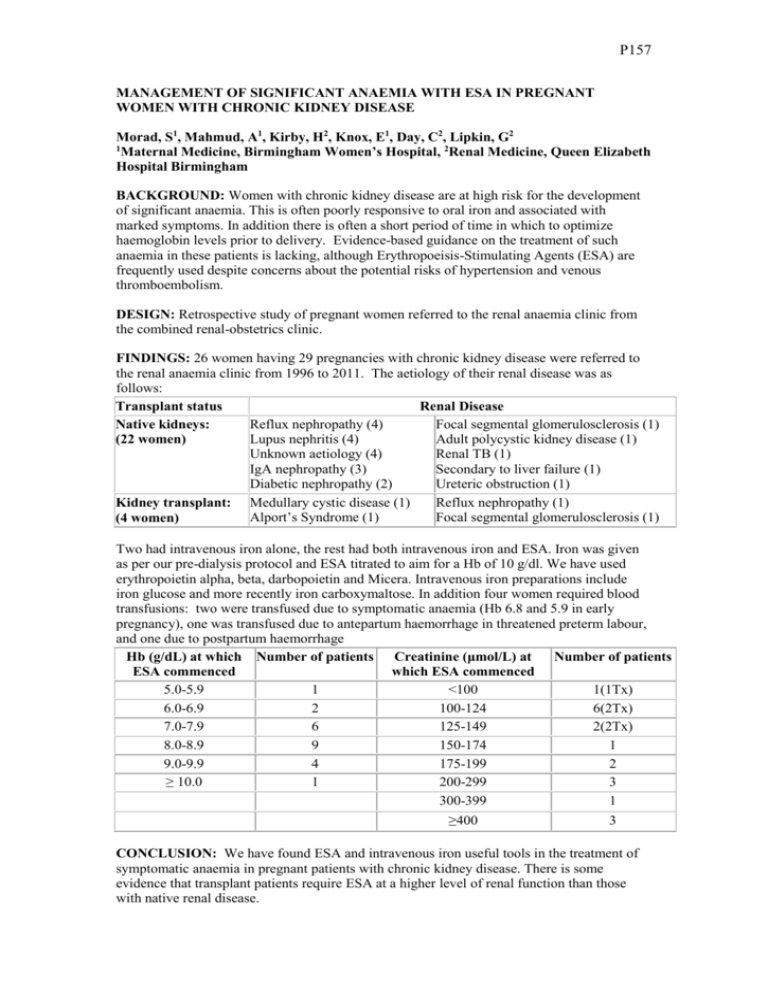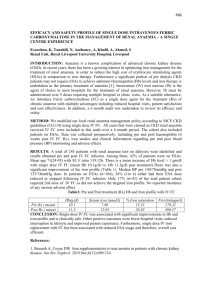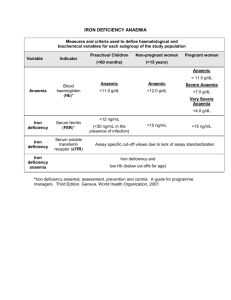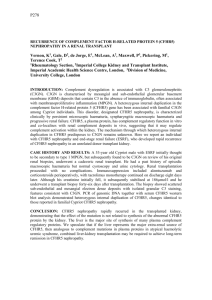management of significant anaemia in pregnant women with chronic
advertisement

P157 MANAGEMENT OF SIGNIFICANT ANAEMIA WITH ESA IN PREGNANT WOMEN WITH CHRONIC KIDNEY DISEASE Morad, S1, Mahmud, A1, Kirby, H2, Knox, E1, Day, C2, Lipkin, G2 1 Maternal Medicine, Birmingham Women’s Hospital, 2Renal Medicine, Queen Elizabeth Hospital Birmingham BACKGROUND: Women with chronic kidney disease are at high risk for the development of significant anaemia. This is often poorly responsive to oral iron and associated with marked symptoms. In addition there is often a short period of time in which to optimize haemoglobin levels prior to delivery. Evidence-based guidance on the treatment of such anaemia in these patients is lacking, although Erythropoeisis-Stimulating Agents (ESA) are frequently used despite concerns about the potential risks of hypertension and venous thromboembolism. DESIGN: Retrospective study of pregnant women referred to the renal anaemia clinic from the combined renal-obstetrics clinic. FINDINGS: 26 women having 29 pregnancies with chronic kidney disease were referred to the renal anaemia clinic from 1996 to 2011. The aetiology of their renal disease was as follows: Transplant status Renal Disease Reflux nephropathy (4) Focal segmental glomerulosclerosis (1) Native kidneys: Lupus nephritis (4) Adult polycystic kidney disease (1) (22 women) Unknown aetiology (4) Renal TB (1) IgA nephropathy (3) Secondary to liver failure (1) Diabetic nephropathy (2) Ureteric obstruction (1) Reflux nephropathy (1) Kidney transplant: Medullary cystic disease (1) Alport’s Syndrome (1) Focal segmental glomerulosclerosis (1) (4 women) Two had intravenous iron alone, the rest had both intravenous iron and ESA. Iron was given as per our pre-dialysis protocol and ESA titrated to aim for a Hb of 10 g/dl. We have used erythropoietin alpha, beta, darbopoietin and Micera. Intravenous iron preparations include iron glucose and more recently iron carboxymaltose. In addition four women required blood transfusions: two were transfused due to symptomatic anaemia (Hb 6.8 and 5.9 in early pregnancy), one was transfused due to antepartum haemorrhage in threatened preterm labour, and one due to postpartum haemorrhage Hb (g/dL) at which Number of patients Creatinine (μmol/L) at Number of patients ESA commenced which ESA commenced 5.0-5.9 1 <100 1(1Tx) 6.0-6.9 2 100-124 6(2Tx) 7.0-7.9 6 125-149 2(2Tx) 8.0-8.9 9 150-174 1 9.0-9.9 4 175-199 2 ≥ 10.0 1 200-299 3 300-399 1 ≥400 3 CONCLUSION: We have found ESA and intravenous iron useful tools in the treatment of symptomatic anaemia in pregnant patients with chronic kidney disease. There is some evidence that transplant patients require ESA at a higher level of renal function than those with native renal disease.







